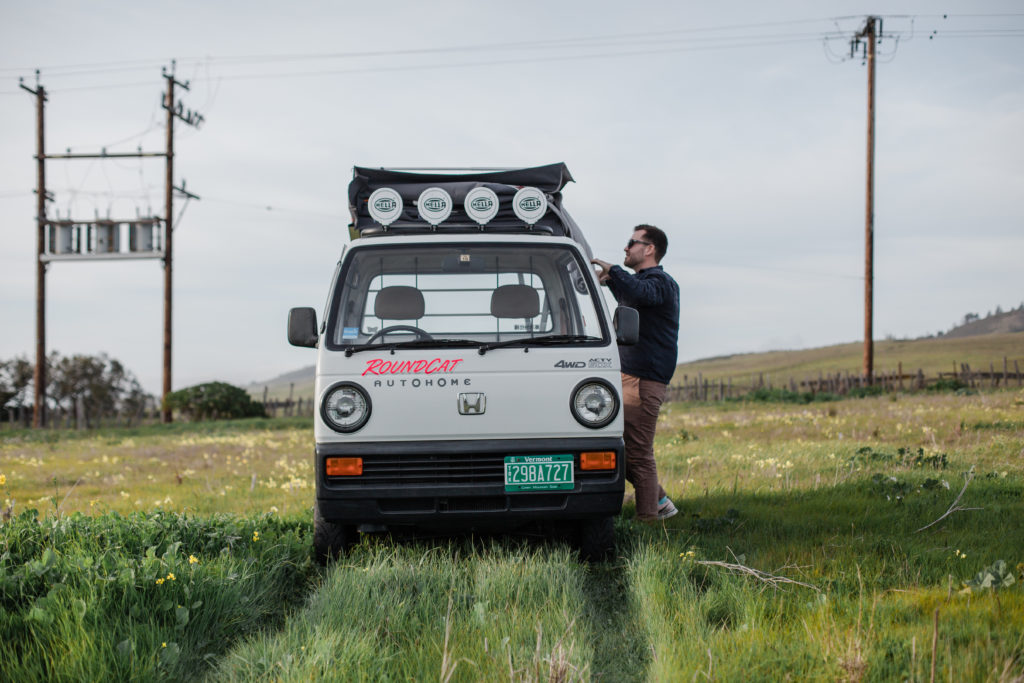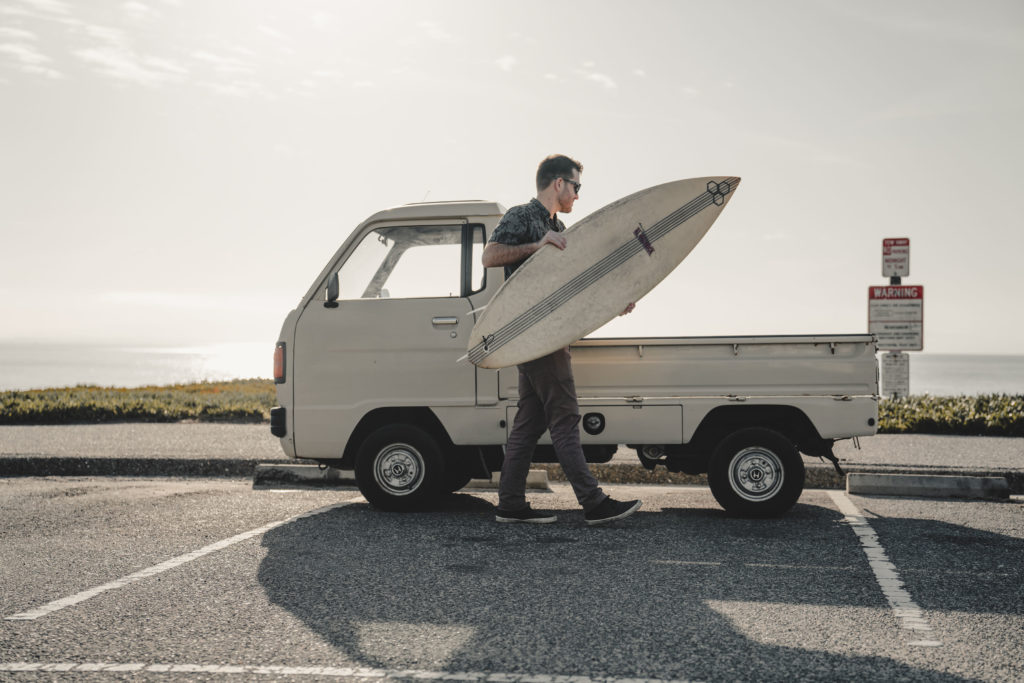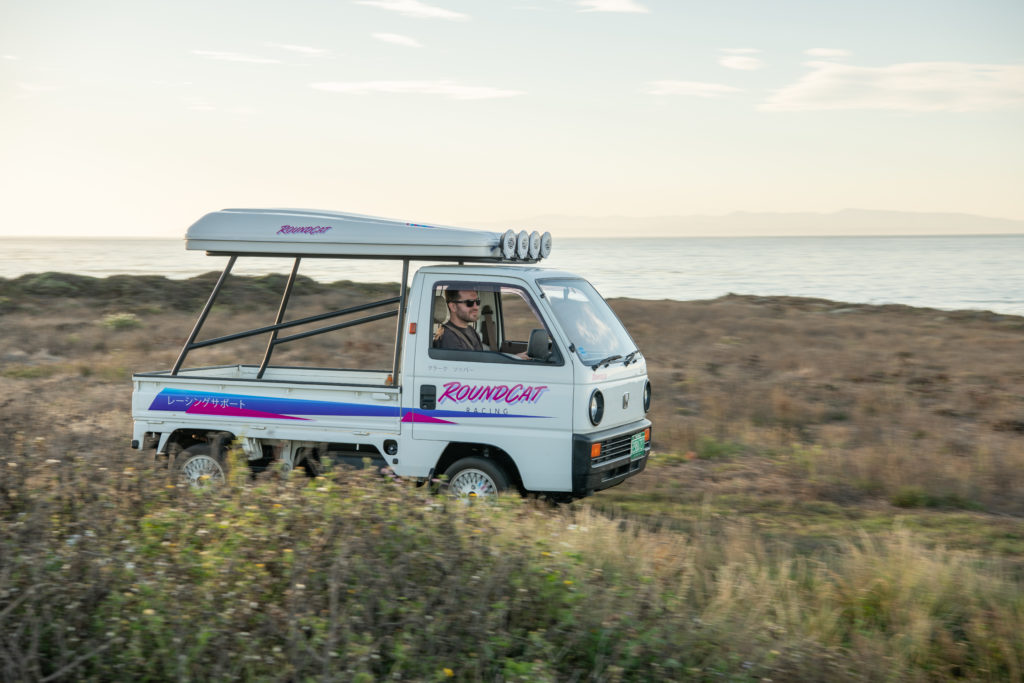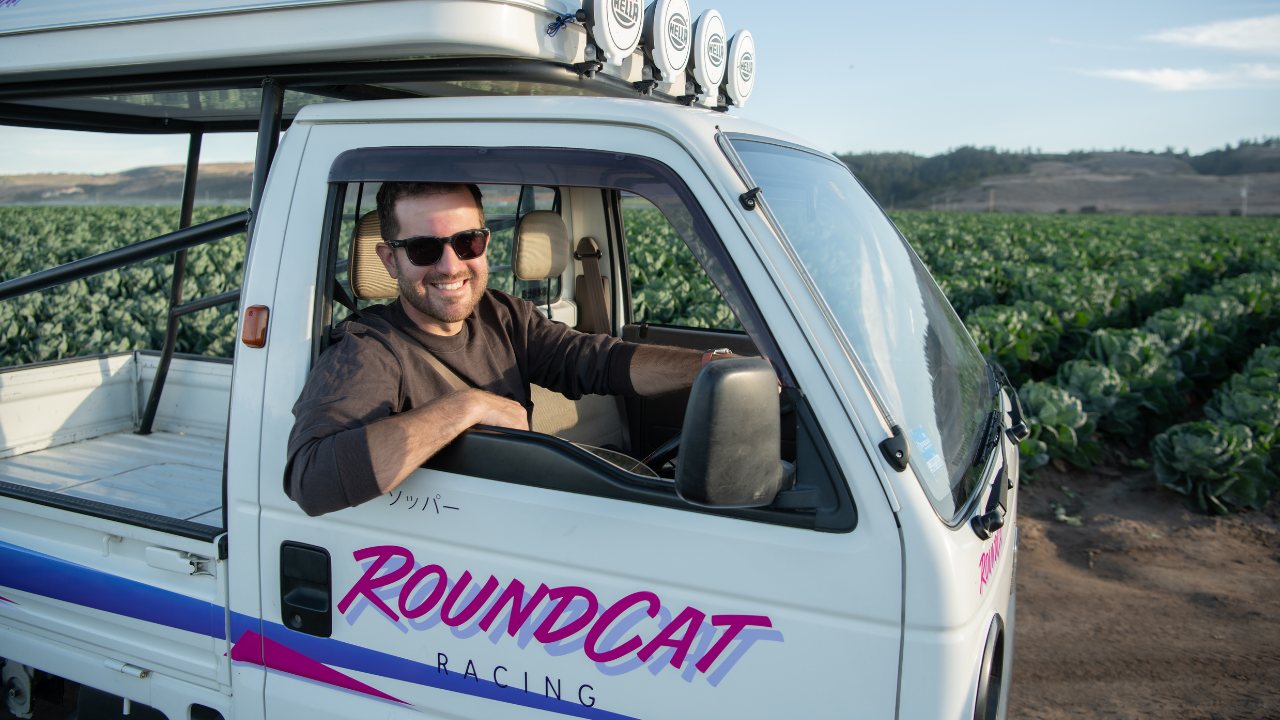By Mat Weir
Trucks. They’re big. They’re macho. They’re All-American. Usually it doesn’t even matter if you necessarily need a truck to own one. So many of us use them for grocery store runs or taking the kids to soccer practice instead of scaling the mountainous terrain or hauling a house’s worth of lumber like in oversaturated internet, radio, and tv ads.
Growing up in a conservative, affluent Los Angeles suburb, having a truck was synonymous with being the biggest and toughest around, no matter what your age. The parking lot of my high school was littered with Ford F150 and F250 behemoths, often birthday or pre-graduation presents (sometimes by several years) to my fellow classmates.
That’s one of the reasons why I never wanted one. The meat-head, bro culture that came along with Southern California truck ownership was never my taste. I always found attaching masculinity to things instead of people, characteristics and ideas was strange and too simplistic for real life. A grand commercial life sold to us by the powers that be. Plus, most American trucks are–or were–major gas guzzlers and I started driving in the early 2000s just when gas prices began to rise from their decades long lull.
But there’s another kind of truck that is so completely opposite from its American counterpart it could only come from Japan. Economical and sensible, it’s a casual cruiser but still built for an outdoors lifestyle. I’m talking about the small but mighty Keitora–or Kei (pronounced like the letter K) truck as it’s known by its vivacious fanbase.
“They are incredibly democratic in concept and made for the people” explains Clark Sopper. “But not in a machismo way like in the U.S. Kei trucks have more of an understated utility.”
Sopper should know.
The Soquel resident and professional design consultant first fell in love with the unique flatbeds as a teenager growing up in Vermont. He saw them used by a local farm and the cozy design stayed with Sopper throughout his young adult life. After graduating college he found himself in Japan trying to buy a motorcycle from a dealer who also owned a Kei truck that Sopper complimented. Destiny, fate or just the right place at the right  time, the rest was history.
time, the rest was history.
“He said he could help me ship one over as well and I said, ‘Sure let’s try it’ without ever having driven one,” he remembers fondly. “And I fell in love when it showed up.”
He’s not kidding. After that first purchase only six years ago Sopper and his partner, Jennifer Harris, now are the proud owners of 14 different Kei trucks. And it seems their love for the small-scaled trucks is only growing larger. Back in 2019 they launched the Roundcat Racing Instagram and website–named for their pet cat, Jake–where fans of the fun-sized vehicles can purchase, discuss or just admire everything Kei related. The Instagram account’s 3000-plus followers hail from everywhere around the globe although, not surprisingly, most are located in Japan and America. But it’s their love for the Kei lifestyle that transcends all boundaries.
“It’s a really great way to make meaningful connections with people even if we don’t share strong language skills,” Sopper says. “It’s absolutely a lifestyle object.”
So, what exactly IS a Kei truck?
Originally created in 1949, the Kei truck class evolved from three-wheeled trucks based on motorcycles, called san-rin, popular in pre-World War II Japan. After the war, the Japanese government wanted local automakers to create an inexpensive, practical automobile for the everyday urbanite that would also benefit  rural, farming and agriculturally-based citizens. Because Japan’s infrastructure and highways are much more condense and pragmatic than what most American’s are used to, the Kei class boomed in its native country eventually being manufactured by companies like Suzuki, Honda, Mazda, Mitsubishi and more. Today they are used by farmers, fishers, urban dwellers and have even been incorporated into police and fire departments because of their low cost, durability and versatility.
rural, farming and agriculturally-based citizens. Because Japan’s infrastructure and highways are much more condense and pragmatic than what most American’s are used to, the Kei class boomed in its native country eventually being manufactured by companies like Suzuki, Honda, Mazda, Mitsubishi and more. Today they are used by farmers, fishers, urban dwellers and have even been incorporated into police and fire departments because of their low cost, durability and versatility.
By definition Kei trucks can’t have an engine larger than 660cc (.67 liters) or have more than 64 horsepower, although many owners end up supercharging the motors for a bit of extra fun. This means Kei trucks are not ideal for highway travel–with a top speed of around 65 miles per hour.
Or as Sopper puts it, “You’ve really got to push it to come close to highways speeds.”
Because of this he admits the name, Roundcat Racing is more tongue-in-cheek. However, it’s also an homage to sport racing in general, which he participates in at the Leguna Seca track near Salinas and Monterey.
“It’s more the absurdity of seeing these trucks as racing vehicles,” he laughs before adding there are similarities. Sopper believes today’s American SUVs and pickups are “uselessly large and luxurious.”
“Kei class is very elemental. It is what it is and it doesn’t have a lot more,” he explains. “They are purpose-built much like racing cars.”
However, Keis are the perfect machine for cruising around town or performing certain tasks a sedan just isn’t cut out for. Harris and Sopper, for instance, use theirs for gardening around their property. With a six gallon fuel tank one is pressed to find a cheaper car to fill up. Not to mention, at an average cost of $5,000 to $10,000, it’s the perfect car for young people or the perennial broke college student. Plus, the pickups can’t be longer than 11.2 feet, wider than 4.85 feet or taller than 6.5 feet, so owners are rarely asked to help their friends move furniture unlike every American truck owner you know.
“The entire thing is tiny!” laughs Sopper, noting the cab barely fits two people. “It’s kind of like driving an oversized golf cart.”
Which–in his eyes–is what makes it perfect for the beach life.
Currently, only two other people own Keis in Santa Cruz, Soppersays, but the greater Bay Area has a much wider community of the tiny truck lovers. During pre-pandemic times, the locally-based Driving While Awesome! podcast would host a monthly Cars & Coffee event at the Wrigley building on the Santa Cruz Westside “that would draw a number of Kei car guys.”
But with gas prices quickly climbing to five dollars a gallon and more Americans–and Santa Cruzans–looking for more practical vehicles, maybe we’ll start seeing more Kei class cars in the near future. Ok, that’s probably a stretch in our “larger is better” society but it’s safe to say there will always be a niche for these nuggets.
“In Japan the older ones have only been thought of as ‘collectible’ very recently,” states Sopper. “They offer a really exciting classic car ownership experience for not a lot of money.”

To learn more about Roundcat Racing head over to their website: https://www.roundcatracing.com

















